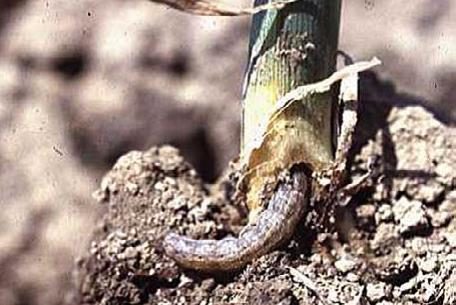Source: Ohio State University
Significant numbers of black cutworms in traps set up by entomologists to determine the number of moths migrating up from the South have been reported in Indiana and Kentucky. Large numbers of armyworms have also been caught in Kentucky traps.
Since these are migratory pests, neighboring states should be prepared to start scouting their fields once corn is emerging or has come up. Ohio State University entomologist Andy Michel says both insects can cause significant stand loss in corn, and armyworms can be a significant pest in wheat.
Black cutworms tend to infest fields with significant ground cover and weed presence, Michel says, and are especially attracted to chickweed.
“With black cutworm, growers can find significant injury especially after planting, right when the corn is starting to emerge,” he says. “This year, emergence is likely to occur during the first or second week of May if growers are able to start planting soon.
“Females like to lay eggs in fields with heavy weed cover, and as these weeds are killed by tillage or herbicide, the larvae move to feed on emerging corn. Black cutworm can cause severe cutting of the plant. The resulting stand loss in corn is generally associated with below- or at-ground-level feeding injury, which occurs below the growing point.”
Growers who have fields with a history of black cutworms are more likely to have cutworms in their fields, Michel adds.
“There are certain transgenic varieties of corn, including those with the Viptera trait and Cry1F trait, that will do a good job of protecting against black cutworm,” he says, noting that this week Kentucky officials reported seeing black cutworms at “a concerning level.”
Female armyworms lay eggs in grasses including wheat, where eggs hatch over 2 weeks. As the larvae grow, they can defoliate wheat plants and lead to yield loss. Armyworms can also cause damage to corn that is planted into wheat fields or other fields that have a grassy cover.
“If you do have an infestation, you could have some significant stand loss, with areas that may need replanting or rescue treatments,” Michel says. “Growers who find black cutworm infestations may find that rescue treatments are more effective than preventive treatment, including insecticidal seed treatment.”







Post a comment
Report Abusive Comment